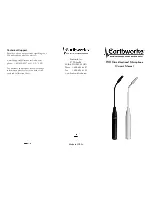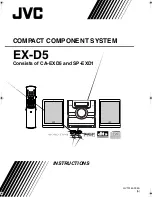
Section 150-231-164
Revision 04
Page 14
TABLE 2. HLU-231 GNLB TEST PROCEDURES
Step
Action
1
Have the CO tester send the HRU-412 (3 in 7) in-band loop-up code for five seconds. Observe that
the HLU-231 List 6D displays the “NREM” message indicating an HRU loopback is in effect (Figure
5).
2
Have the CO tester transmit a T1 test signal into the HLU-231 List 6D and verify that the returned
(looped) signal is error free.
3
If the above test fails, have the CO tester transmit the (3 in 5) in-band loop-down code. Verify that
the HLU-231 List 6D display returns to normal.
4
Have the CO tester send the HLU-231 List 6D (4 in 7) in-band loop-up for five seconds. Observe
that the HLU-231 List 6D displays the “NLOC” message indicating an HLU-231 List 6D loopback is
in effect.
5
Repeat Step 2. If the test passes, the problem is in the cable pair or the HRU-412. If it fails, the
problem is in the CO equipment.
6
The NREM and NLOC loopbacks can also be initiated from the front panel of the HLU-231 List 6D
with the MODE and SEL push-buttons (Section B Paragraph 3.09).
7
The HLU-231 List 6D can be looped-up from the remote location (CREM) by issuing the (6 in 7)
command at the HRU-412 DS1 input port.
8
The HRU-412 can be looped-up from the remote location (CLOC) by issuing the (5 in 7) command
at the HRU-412 DS1 input port.
Note 1
When T1 loopback tests are performed on the HiGain system with metallic loopback connections at either end,
the DS1 code that occurs at the metallic loopback interface may be different from the DS1 code being received
at the opposite end when the DS1 user code is set to AUTO. For example, if the HRU-412 has a metallic
loopback and the HLU-231 List 6D receive pattern code is changed from AMI to B8ZS and then the all “0”
pattern is sent into the HLU-231 List 6D, the HRU-412 remains in its AMI mode and thus loops all “0”. This
causes the HRU-412 to indicate a LOS condition which then causes the HLU-231 List 6D to output the AIS
pattern.
Note 2
The HiGain system may take longer than normal to respond to in-band commands when its framing mode is set
to UNFR and the in-band commands are sent in either an SF or ESF mode. The frame bits override the
command bits and cause errors in the command sequence. These errors cause the HiGain system to reject
some sequences. This can extend the detection interval.















































